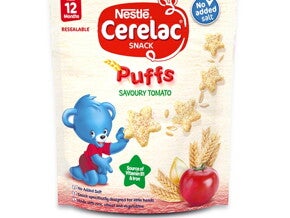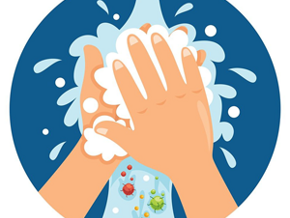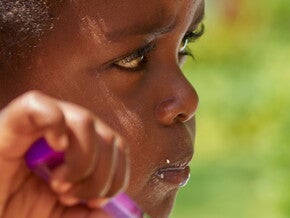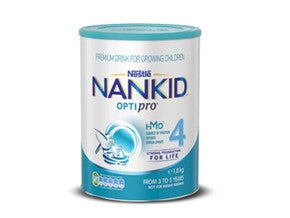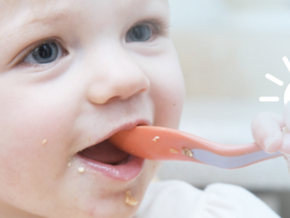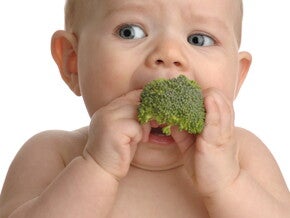
- Grazing— Yes, letting your toddler “graze” is an excellent way to get her to try something new. Using an ice-cube tray, or muffin tin, place healthy, bite-size snacks in each compartment. Try giving each item a really fun name that your toddler will giggle at while munching.
- Go for the dip — Maybe because it’s delightfully messy, who knows why? But kids love to dip. Try serving thin apple slices or cut veggies with cottage cheese, cream cheese, guacamole or yogurt.
- Drink up — Although drinks should never replace food, sometimes kids prefer to drink it, rather than eat it. If so, prepare the occasional nutritious smoothie or fresh juice. It’s a great way to “hide” unwanted foods, especially veggies.
- Cut it into shapes — ‘Finger-food’ is a word you can’t live without right now, so try cutting toast or pancakes into fun shapes using cookie cutters.
- Dress it up — How the food looks on the plate could be reason enough for your toddler to refuse it. Try using your child’s own toy plates when dishing out a snack.
- The verdict on veggies— Often the hardest food to get into tiny tummies; vegetables are packed with vital nutrients. Here are some tips to entice your little one:
- Steam your greens, they are usually sweeter cooked instead of raw.
- Create a work of art by making veggie smiley faces; peas for eyes, tomato lips, cucumber ears, just to get you started.
- Cheese in the trees — a common trick for camouflaging broccoli or cauliflower, drizzle some cheese over those greens.
- Hidden veggies – add some greens to a fruit smoothie or puree veggies to add to a pasta sauce or other dish.
- Monkey see, monkey do— Your child may not want to try anything new, but the neighbour’s kid, who’s about the same age as your little one, loves to eat. Invite him over for lunch and let your child watch in amazement. Feeding kids in groups lets others learn by example.
- Swap meals, not mealtimes— Your toddler is still too young to understand the difference between a breakfast food and afternoon snack. If she wants leftover meatloaf in the morning, and star-shaped pancakes for dinner, that’s okay. Make sure you’re not cooking on demand all the time, but the rest of the family will probably enjoy the change as well.
- A little bit of everything – Encourage your toddler to taste a little bit of everything. Explain that they don’t need to like everything; they just need to taste it.
- Make every calorie worth the effort— If your tot is only eating a bite or two at every meal, then make every one of those bites count. Serve nutrient-dense foods, foods that pack a lot of nutrition into tiny portions. Some examples include: avocados, pasta, cheese, yogurt, chicken, sweet potatoes and fish.
Still no progress, your picky eater refuses to eat
Sometimes children are just picky eaters, and no amount of trying, cutting or camouflaging will do. Stay relaxed; at the end of each meal, remove the food without a fuss. A skipped meal will not hurt a healthy child. Try not to worry too much about meeting all the requirements all the time. Look at your little one’s food intake over the week rather than over a day, developing healthy eating habits is about the big picture.
Be careful not to show your disappointment, reinforcing this behaviour by showing your frustration may encourage it. Remember, don’t take it personally you’re certainly not a bad chef. And your child won’t let themselves go hungry, so eventually, she will eat. By continually offering healthy options, you’ll soon see some healthy habits start to form.

